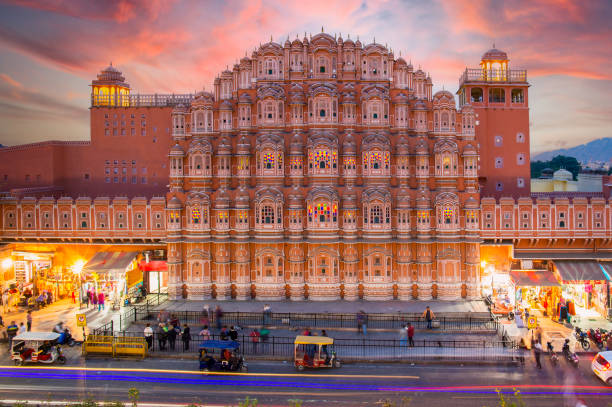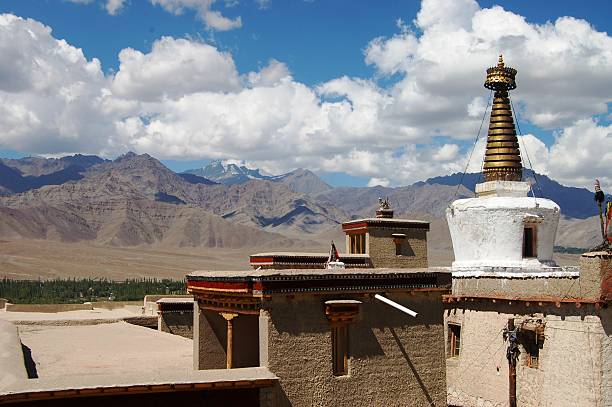Jaipur,
the capital of Rajasthan, India, is a city that beckons travelers with its rich history, vibrant culture, and stunning architectural marvels. Often referred to as the “Pink City,” Jaipur is a place where the past seamlessly blends with the present, creating an experience that is both immersive and enchanting. In this 800-word exploration, we will delve into the heart of Jaipur, uncovering its historical significance, architectural wonders, cultural treasures, and the modern-day allure that makes it a must-visit destination.
Historical Significance:
Jaipur was founded in 1727 by Maharaja Sawai Jai Singh II, a visionary ruler and an adept town planner. The city was meticulously designed following the principles of Vastu Shastra, an ancient Indian architectural science, which is evident in the layout of its streets, markets, and palaces. Jaipur was painted pink in 1876 to welcome the Prince of Wales, a tradition that continues today and lends the city its nickname.
The historical significance of Jaipur is deeply intertwined with its role as a royal city in the state of Rajasthan. The city served as the political and administrative hub of the region, and the legacy of its rulers is preserved in its palaces, forts, and museums.
Architectural Marvels:
Jaipur is a treasure trove of architectural wonders that reflect the grandeur and opulence of its past. Some of the must-visit architectural marvels include:
1. Hawa Mahal: Also known as the “Palace of Winds,” the Hawa Mahal is a five-story pink sandstone structure with 953 intricately designed windows. It was built to allow royal women to observe street festivities and daily life without being seen.
2. City Palace: The City Palace, a magnificent complex, is a blend of Rajput and Mughal architectural styles. It houses museums that display an impressive collection of royal artifacts, costumes, and art.
3. Amer Fort: Located just a short drive from the city center, Amer Fort is a hilltop fort with impressive gates, palaces, and gardens. The Sheesh Mahal (Mirror Palace) within the fort is particularly captivating, with walls adorned with intricate mirror work.
4. Jantar Mantar: This UNESCO World Heritage Site is an observatory built by Maharaja Jai Singh II. It features a collection of architectural instruments used for astronomical observations, including the world’s largest stone sundial.
5. Nahargarh Fort: Perched on the Aravalli Hills, Nahargarh Fort offers panoramic views of the Pink City. It was built as a defense fort and is now a popular spot for tourists.
6. Jaigarh Fort: Known for housing the world’s largest cannon on wheels, Jaigarh Fort is an impressive fortress that played a crucial role in the defense of the city.
Cultural Treasures:
Jaipur is not just about its historical monuments; it’s also a city that pulsates with culture. The locals are warm and welcoming, and you’ll have the opportunity to immerse yourself in the following cultural experiences:
1. Traditional Cuisine: Rajasthani cuisine is a highlight of Jaipur. Don’t miss the opportunity to savor dishes like Dal Baati Churma, Gatte Ki Sabzi, and the delectable Rajasthani sweets.
2. Local Markets: Jaipur’s bustling markets are a shopaholic’s paradise. Johari Bazaar and Tripolia Bazaar are known for their jewelry and textiles, while Bapu Bazaar is famous for its traditional artifacts and crafts.
3. Festivals: If your visit coincides with one of the many festivals celebrated in Jaipur, such as Diwali or Holi, you’ll witness the city come alive with color and tradition. The Elephant Festival, celebrated during Holi, is a unique and captivating event.
4. Traditional Arts and Crafts: Jaipur is renowned for its artistic traditions, including block printing, pottery, jewelry making, and miniature painting. You can visit workshops and markets to witness and purchase these exquisite crafts.
5. Folk Music and Dance: Rajasthan is famous for its folk music and dance forms. You can enjoy traditional performances, including the energetic Kalbelia dance and the soulful Manganiyar folk music.
Modern-Day Allure:
While Jaipur is steeped in history, it has also embraced modernity with open arms. The city offers a range of contemporary attractions and activities for travelers:
1. Luxury Accommodation: Jaipur boasts a range of luxury hotels and boutique accommodations, allowing visitors to experience modern comfort while being surrounded by history and tradition.
2. Cafes and Restaurants: The city has a burgeoning food scene with hip cafes and restaurants serving a blend of global and local cuisine. From rooftop dining to street food, there’s something for every palate.
3. Shopping Malls: For those who enjoy modern shopping experiences, Jaipur has modern malls and markets offering a variety of brands and products.
4. Art Galleries: Jaipur’s burgeoning art scene is worth exploring. You can visit contemporary art galleries showcasing the works of local and national artists.
5. Wellness Retreats: Jaipur also offers wellness and yoga retreats for those seeking relaxation and rejuvenation.
Best Time to Visit:
The best time to visit Jaipur is during the winter months, from October to March, when the weather is pleasant and conducive for exploring the city’s outdoor attractions. Summers can be scorching, and monsoons, while bringing relief from the heat, may disrupt travel plans due to heavy rainfall.
In conclusion, Jaipur, Rajasthan, is a city that encapsulates the essence of India’s rich cultural and historical heritage. Its architectural marvels, cultural treasures, and the harmonious blend of tradition and modernity make it a destination that caters to a diverse range of interests. Whether you’re a history enthusiast, a cultural explorer, or a modern traveler, Jaipur’s allure is bound to leave an indelible mark on your journey through India’s past and present. The Pink City stands as a testament to time, a living museum of grandeur, and a vibrant hub of life and culture.



